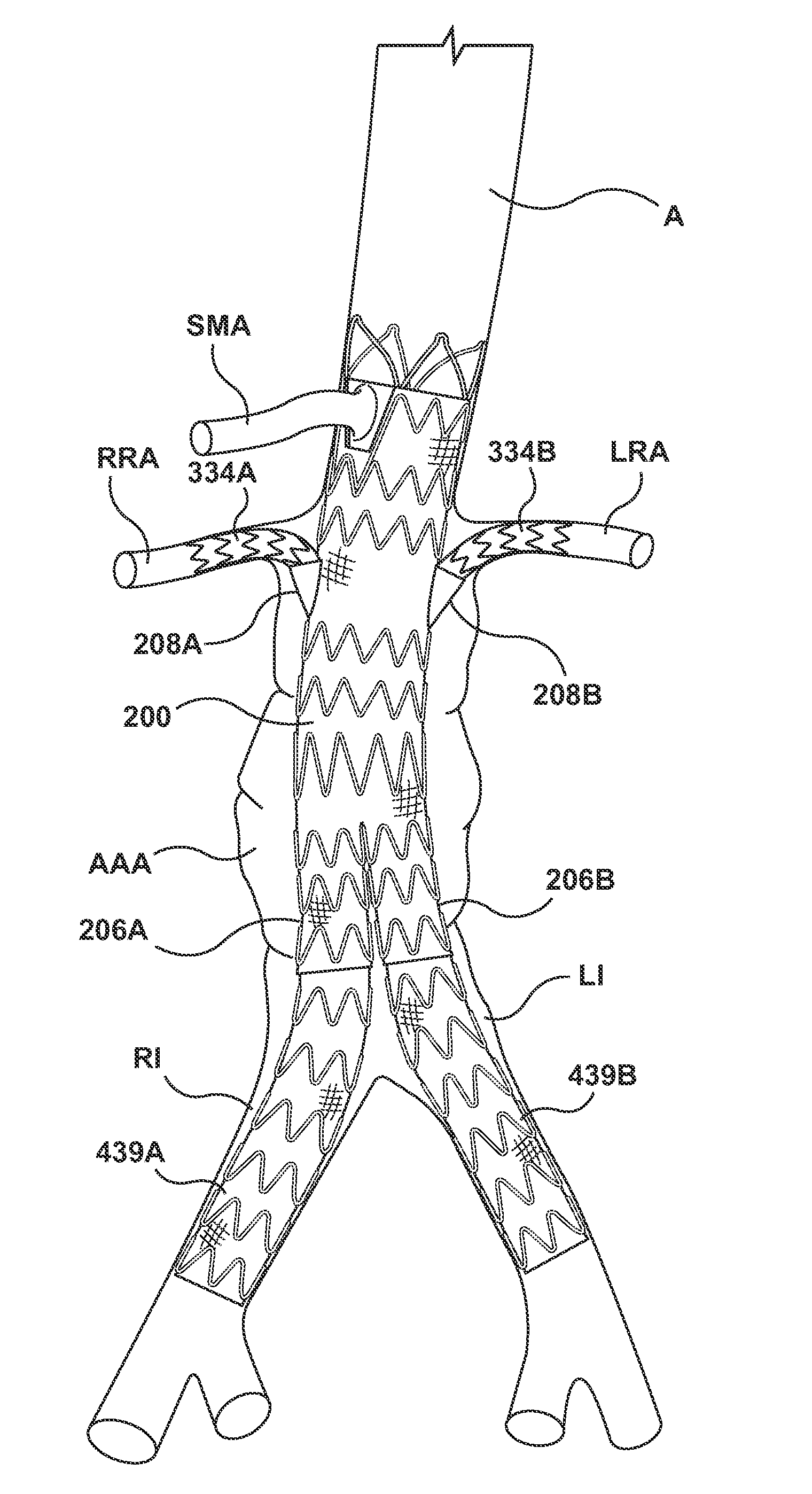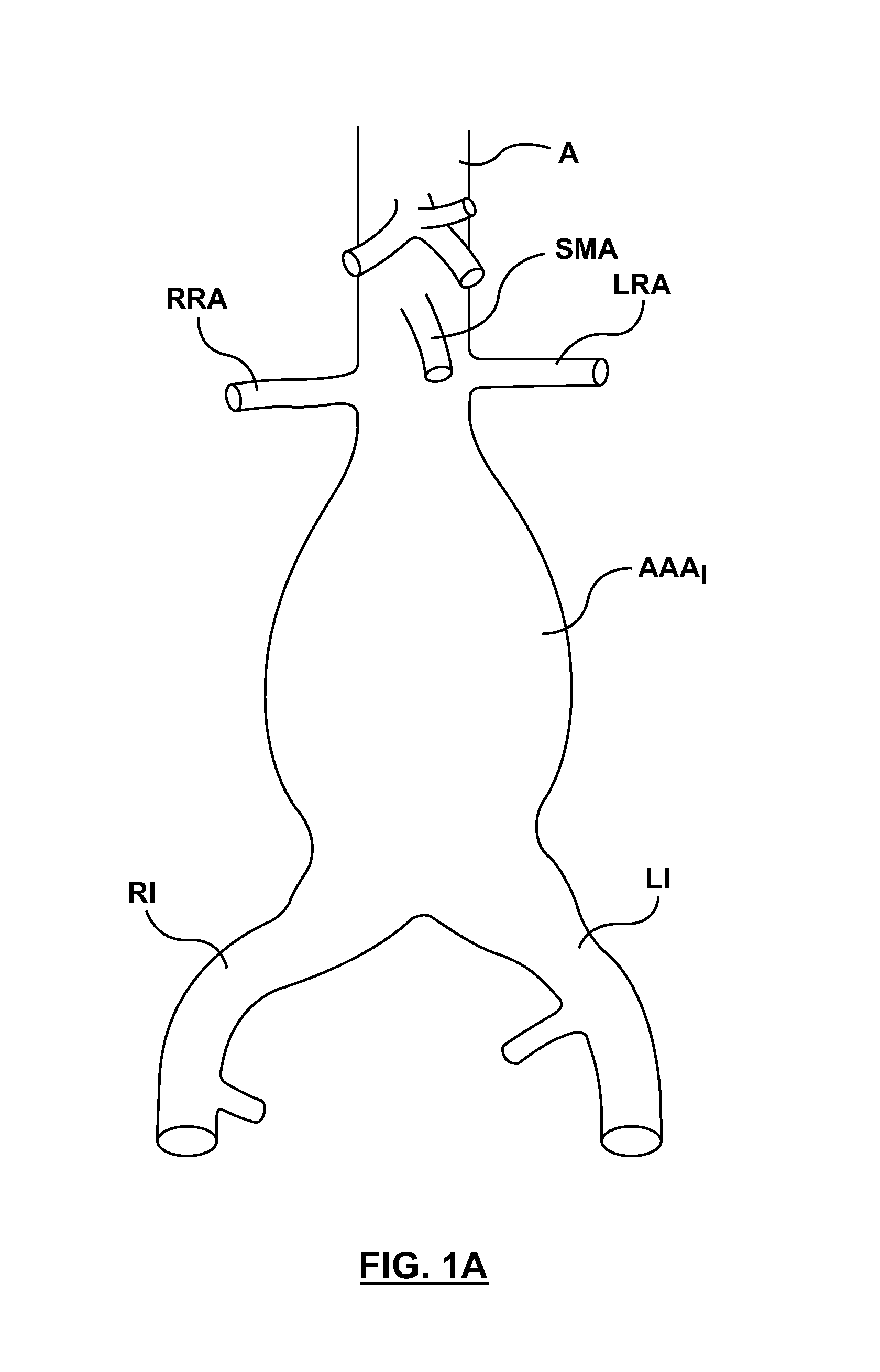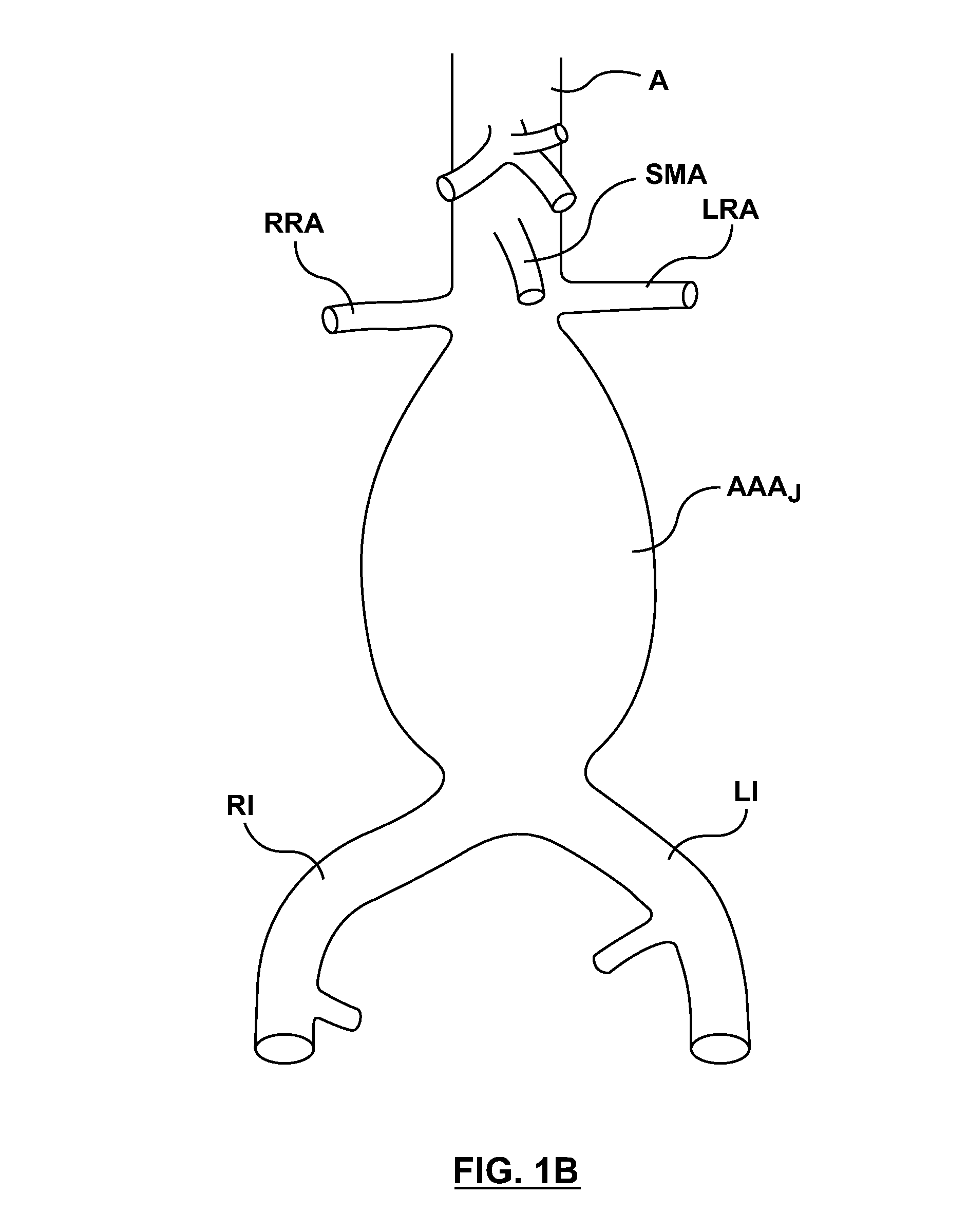Stent-graft prosthesis for placement in the abdominal aorta
a technology of aortic stent and prosthesis, which is applied in the field of endoluminal medical devices and procedures, can solve the problems of inability to use stent-grafts to bypass internal arteries, insufficient blood flow lumen, and insufficient aneurysmal site, and achieves the effect of greater flexibility
- Summary
- Abstract
- Description
- Claims
- Application Information
AI Technical Summary
Benefits of technology
Problems solved by technology
Method used
Image
Examples
Embodiment Construction
[0027]Specific embodiments of the present invention are now described with reference to the figures, wherein like reference numbers indicate identical or functionally similar elements. Unless otherwise indicated, the terms “distal” and “proximal” are used herein with reference to the direction of blood flow from the heart in using the stent-graft system in the vasculature: “distal” indicates an apparatus portion distant from, or a direction away from the heart and “proximal” indicates an apparatus portion near to, or a direction towards to the heart. In addition, the term “self-expanding” is used in the following description with reference to one or more stent structures of the prostheses hereof and is intended to convey that the structures are shaped or formed from a material that can be provided with a mechanical memory to return the structure from a compressed or constricted delivery configuration to an expanded deployed configuration. Non-exhaustive exemplary self-expanding mate...
PUM
 Login to View More
Login to View More Abstract
Description
Claims
Application Information
 Login to View More
Login to View More - R&D
- Intellectual Property
- Life Sciences
- Materials
- Tech Scout
- Unparalleled Data Quality
- Higher Quality Content
- 60% Fewer Hallucinations
Browse by: Latest US Patents, China's latest patents, Technical Efficacy Thesaurus, Application Domain, Technology Topic, Popular Technical Reports.
© 2025 PatSnap. All rights reserved.Legal|Privacy policy|Modern Slavery Act Transparency Statement|Sitemap|About US| Contact US: help@patsnap.com



